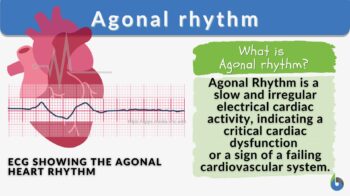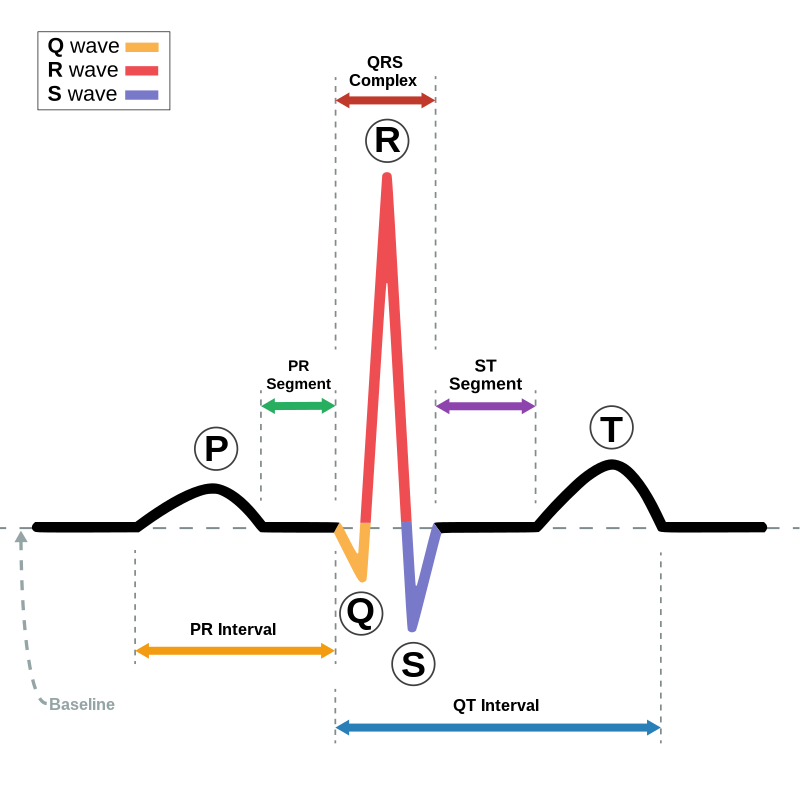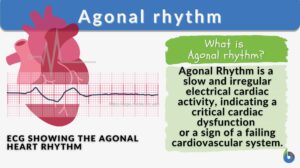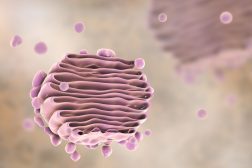
Agonal Rhythm
n., plural: agonal rhythms
/ˈæɡənəl ˈrɪðəm/
Definition: An idioventricular rhythm, characterized by unusually wide and bizarre ventricular complexes, often seen in moribund patients
Table of Contents
Agonal Rhythm Definition
Agonal rhythm is the slow, irregular heart rhythm (electrical activity of the heart), particularly during the final moments of the life of an individual. It represents a critical cardiac dysfunction or is a critical sign of a failing cardiovascular system wherein the heart becomes less efficient in pumping blood effectively, thus, manifesting beats with low amplitudes and erratic patterns (often with irregular long pauses between beats). It is generally observed in a person who is in the process of dying or experiencing a life-threatening medical emergency situation.
Etymology: The term “agonal” is derived from the Greek word “agon,” which means struggle, and it aptly describes the associated struggle for life in the face of impending death.
Variant: agonal heart rhythm
Agonal sample (by HEARTSTART SKILLS Frasco):
Characteristics Of Agonal Rhythm
In contrast to the normal heart rhythm, an agonal rhythm is characterized by the following:
- Slow, erratic heartbeat
- Extended gaps between heartbeats resulting in prolonged pauses between beats
- Low amplitude, meaning the height of the electrical signals on an ECG strip is significantly reduced.
- P waves (the electrical activity associated with the atria), in particular, may be absent, obscured, or replaced by irregular fibrillation waves, reflecting the profound disturbance in atrial depolarization.
- QRS complex (the depolarization of the ventricles) during agonal rhythm may show irregularities and variations in both duration and shape (e.g., wider, narrower, or irregularly spaced).

Causes
Here are the common causes of agonal rhythm:
- This can be in the form of suffocation, severe respiratory failure, choking, and other factors resulting in the lack of oxygen to supply the heart muscle and the body’s vital organs.
- Disturbances in the body’s electrolyte levels, such as high or low potassium, calcium, or magnesium, as these electrolytes not within the homeostatic levels could affect the electrical conductional system of the heart, and eventually lead to agonal rhythm
- Toxicity from certain medications, drug overdoses, or substances that have a toxic effect, especially on the heart, disrupting its normal rhythm
- Physical trauma, brain injury, severe cardiac conditions, and terminal illnesses
Clinical Signs and Management
A person with agonal rhythm may show signs and symptoms as follows:
- Loss of consciousness
- Faint pulse
- Agonal breathing (abnormal gasping for air)
If not promptly addressed, the agonal rhythm may lead to full cardiac arrest. The immediate action of a healthcare provider generally involves administering cardiopulmonary resuscitation (CPR) or administering medications to address the underlying cause, such as treatments that will repair or manage the metabolic imbalance. When symptoms persist despite the initial interventions, the healthcare provider often resorts to defibrillation, e.g., using automated external defibrillators (AEDs), to deliver electrical shocks to the heart to restore normal rhythm.
NOTE IT!
Recent research has focused on machine learning algorithms and artificial intelligence for the early detection of Agonal Rhythm, potentially allowing for faster response, providing guidance through voice prompts, and therefore, improving patient survival rates.
References
- Weil, M. H., & Tang, W. (2019). Agonal rhythms in sudden cardiac arrest. New England Journal of Medicine, 380(4), 390-392.
- American Heart Association. (2020). Guidelines for Cardiopulmonary Resuscitation and Emergency Cardiovascular Care. Circulation, 142(16), S337-S357.
- Paradis, N. A., & Halperin, H. R. (2006). From the Laboratory to the Community: The Importance of Early Defibrillation. Circulation, 114(4), 384-386.
- Eisenberg, M. S., & Mengert, T. J. (2002). Cardiac resuscitation. New England Journal of Medicine, 347(16), 1242-1249.
©BiologyOnline.com. Content provided and moderated by Biology Online Editors.







